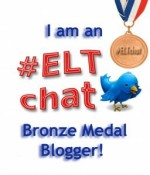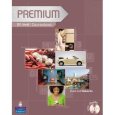
In this lesson plan designed for the British Council Teaching English site, students read a first-person account by a person who stammers, about how he would prefer people to respond when he does so. After some discussion about the topic, the lesson goes on to focus on some different grammatical structures to express preference and sometimes annoyance: would rather/sooner, would prefer, wish. There is some practice using sentence transformation (as found in FCE) and then some more personalised practice.
Aims:
- To help students understand more about stammering and how (not) to respond when someone stammers
- To practise reading for specific information
- To be able to use a range of structures for expressing preference and/or annoyance: would prefer, would sooner, would rather, wish.
Age:
Adults and older teenagers
Level:
CEF level B1+/B2 (especially useful for Cambridge First Certificate preparation)
Time:
45 minutes
Materials:
The lesson plan and student worksheets can be found and downloaded here


 My latest lesson plan for the British Council Teaching English site looks at the benefits of being bilingual or multilingual, and a few myths, hoping to encourage students to value the languages they speak.
My latest lesson plan for the British Council Teaching English site looks at the benefits of being bilingual or multilingual, and a few myths, hoping to encourage students to value the languages they speak.

















How a book changed my life
By Ildar Sagdejev (Specious) (Own work) [Public domain], via Wikimedia Commons
Finally there is a focus on opinion or comment adverbs, before a speaking activity to round up the lesson, about the topic of books and reading.
The lesson would be suitable from B1 upwards.
Download lesson plan PDF here: ELT Resourceful – How a book changed my life
Look here for more free downloadable lessons
Share this:
1 Comment
Filed under Downloadable lesson materials, Exploiting authentic recordings and videos, Listening, Materials development, Pronunciation, Vocabulary
Tagged as authentic materials, comment adverbs, efl, elt, ESL, listening, listening skills, materials, reading, resources, speaking, video, video lesson, world book day